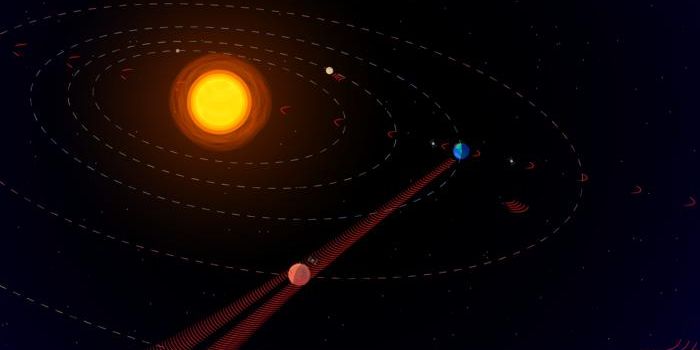Missing Link Between Fast Radio Bursts & Magnetars Found in Our Galaxy
A neutron star is born when a massive star dies out in a supernova, leaving its collapsed and incredibly dense core remaining. According to NASA, the gravitational force exerted by a neutron star is so powerful, if even a marshmallow hit the surface there would be an explosion with the force of one thousand hydrogen bombs.
Magnetars are a type of neutron star that generates a powerful magnetic field. Neutrons already have a very powerful magnetic field that is trillions of times stronger than those of small magnets on Earth. But the magnetic field of a magnetar is one thousand times stronger than that of typical neutrons. A magnetar called SGR 1806-20 once took a tenth of a second to emit a burst of energy that was stronger than the energy released by our Sun over the last 100,000 years.
On April 28, a magnetar released a never-before-seen blend of X-ray and radio signals, including the first fast radio burst (FRB) ever seen from inside our Milky Way galaxy. Scientists have been looking for the source of FRBs since they were detected for the first time in 2007. The observation indicates that magnetars are capable of producing these blasts.
"Before this event, a wide variety of scenarios could explain the origin of FRBs," said Chris Bochenek, a doctoral student in astrophysics at Caltech. "While there may still be exciting twists in the story of FRBs in the future, for me, right now, I think it's fair to say that most FRBs come from magnetars until proven otherwise."
Several satellites detected the X-rays released by the magnetar and the radio portion was identified by a radio telescope and a trio of detectors.
Activity from the magnetar, SGR 1935+2154 (or SGR 1935 for short) was found in the constellation Vulpecula on April 27. Over hours, it was releasing rapid bursts of X-rays that lasted less than a second. The storm subsided, until about 13 hours later when a unique burst was detected by different instruments that were now within view; this one last about half a second.
"The radio burst was far brighter than anything we had seen before, so we immediately knew it was an exciting event," said Paul Scholz, a researcher at the University of Toronto's Dunlap Institute for Astronomy & Astrophysics and a member of the CHIME/FRB Collaboration. "We've studied magnetars in our galaxy for decades, while FRBs are an extragalactic phenomenon whose origins have been a mystery. This event shows that the two phenomena are likely connected."
The findings have been reported in three separate papers in Nature.
The magnetar, SGR 1935, is estimated to be about 30,000 light-years away.
Sources: AAAS/Eurekalert! via NASA/Goddard Space Flight Center, Nature









